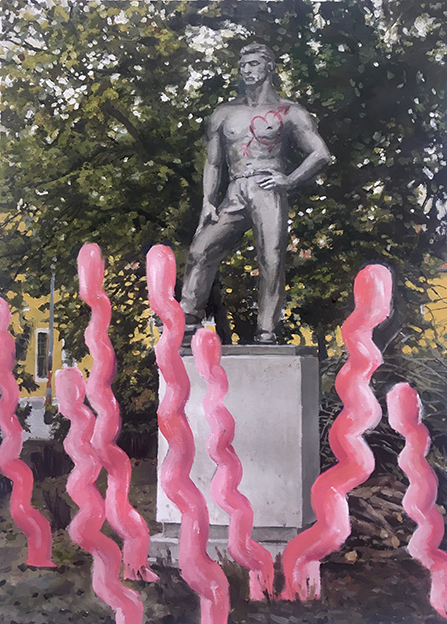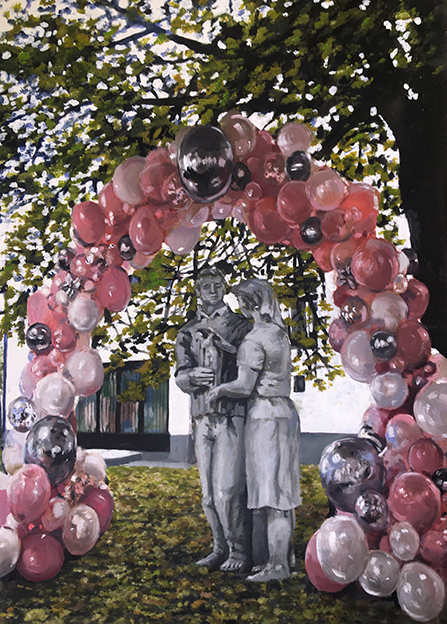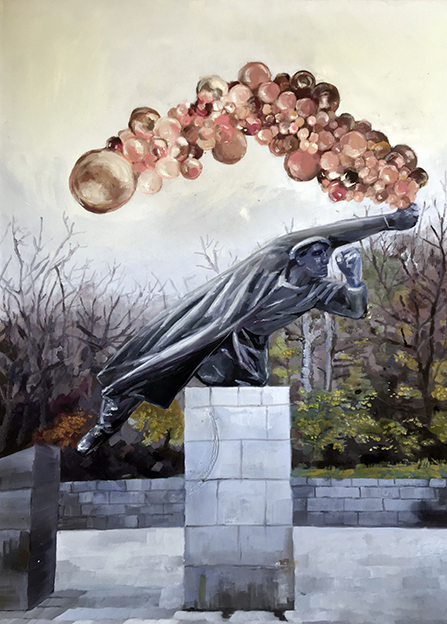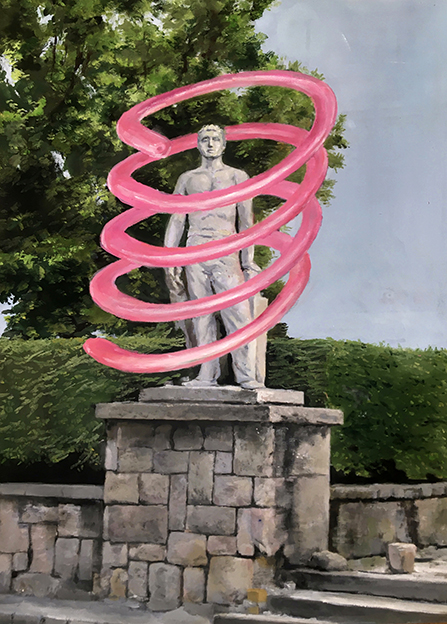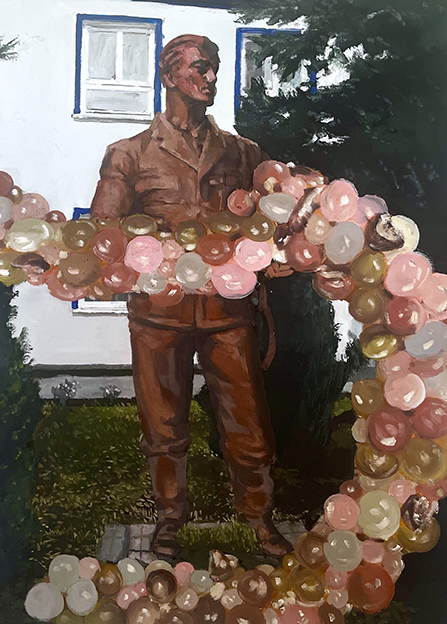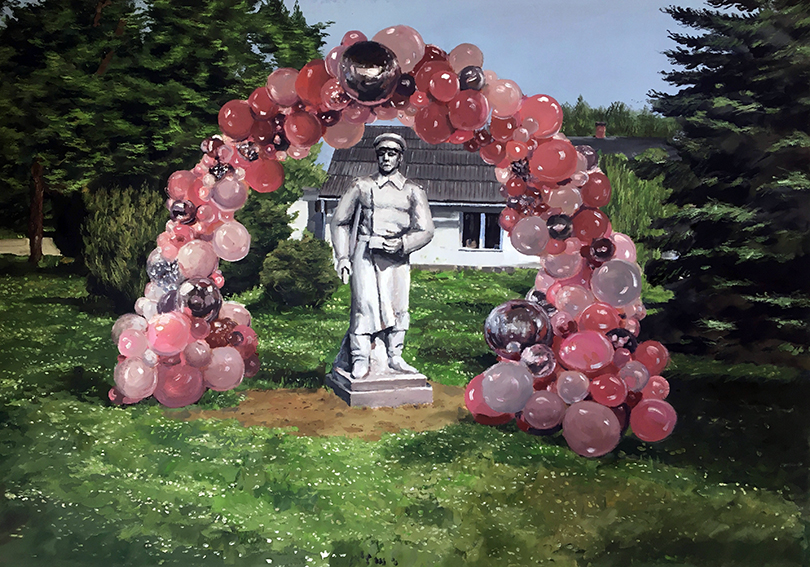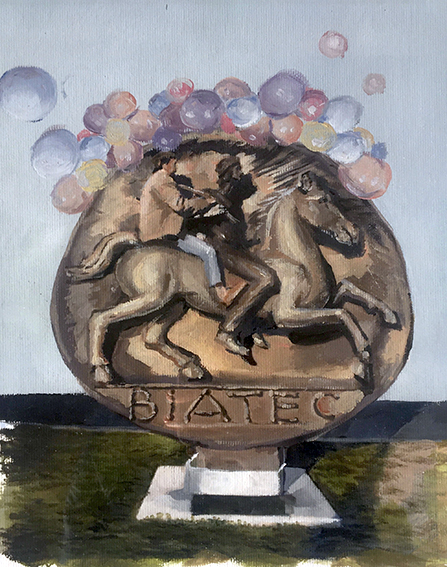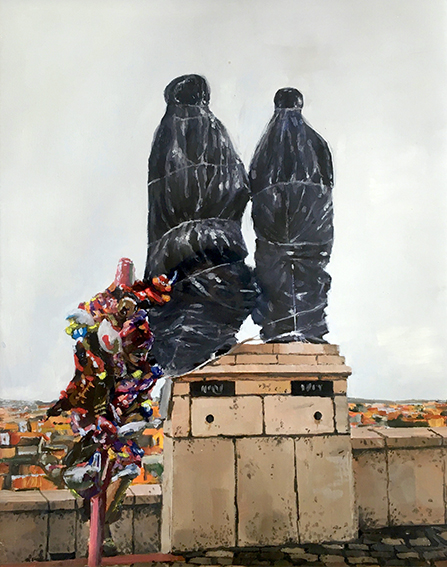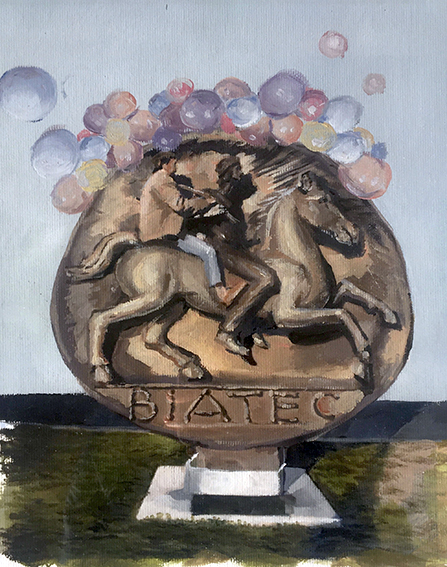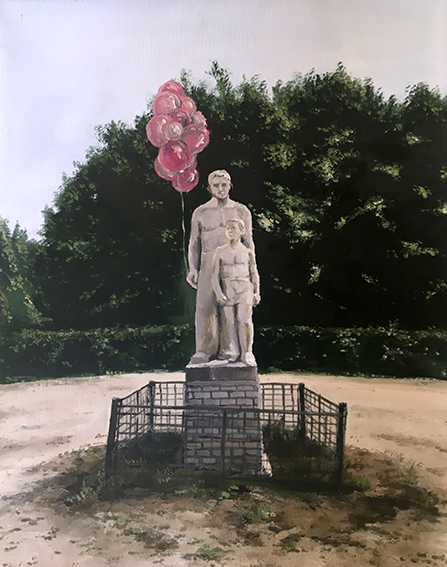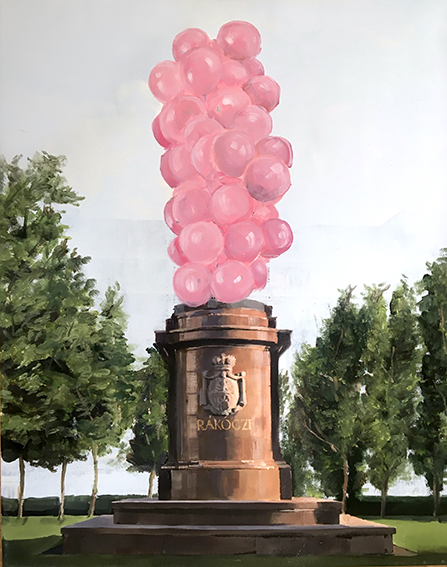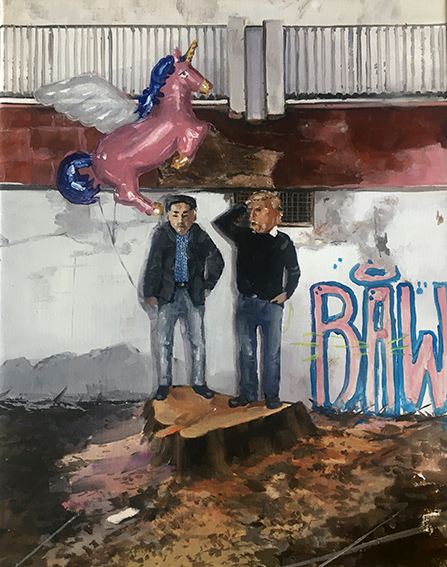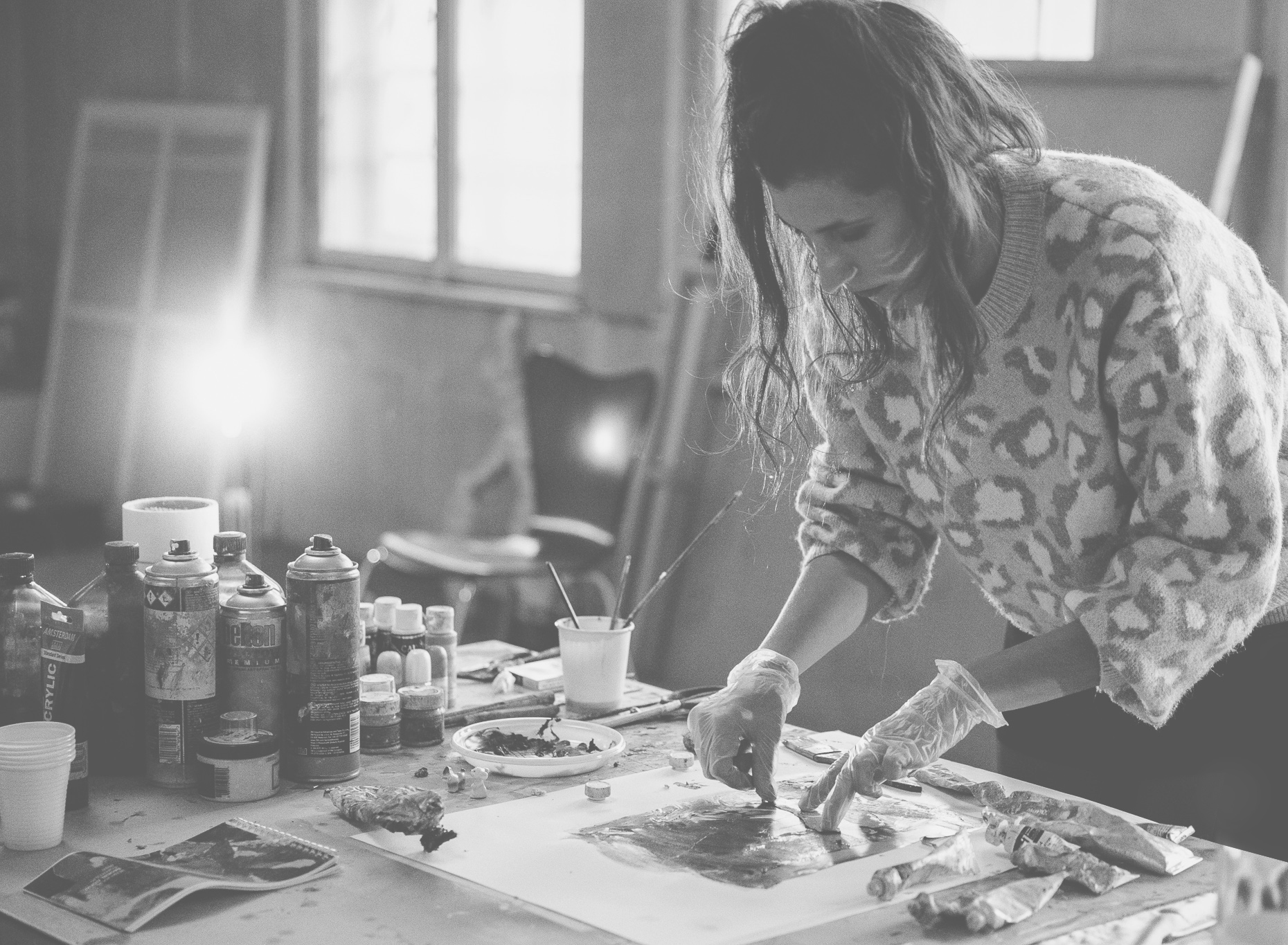NATIONAL HISTORY MY HISTORY
In an abstract sense, we know of our collective past and history. However, it is easy to lose a sense of connection with these thoughts and experiences. We pass public monuments daily, barely noticing them – let alone becoming emotional stirred by their presence. For this to happen, something subjective and personal is needed which, tie our individual stories of the past and present to the wider picture of the monument.
In this wider picture, Júlia has been inspired by her childhood memories of national holidays and monuments with the use of the balloon motif, symbolizing a personal touch. Her balloons are redolent of diverse events: 1st of May – International Workers’ Day celebration and 15th of March – remembering the 1848 revolution and war of independence of Hungary.
Childhood, in so many ways, is about learning to navigate the world around us and to make sense of what seems overwhelming and gigantic. In adulthood, the question for Júlia is: Are there public spaces for public art, sculptures and artistic dialogues in Eastern Europe too? Or is this now just a memory of the past.
Balloons do not stay motionless and in Júlia’s art they convey a variety of meanings and illusions. The vivid colour of pink balloons playfully suggests the dilution in post-communist Hungary. The intervention of paint, leads to the desensitization of society, appearing on the paintings as pink balloons and public art installations, which still remain to be realized in Eastern Europe.
The real connection to memorial remembrance takes place through celebratory metaphors. Balloons also have an innate association with humor and frivolity. Children love to throw them around; they are so easily popped or made to emit rasping noises. At the same time, pink is a color associated with the feelings of love and tenderness – vital in different ways for children and adults alike. In our innocent and naivety, fantasy is not an escape from reality but the key to navigating it. These paintings are painted for adults by an adult, and strive to restore a childhood lens in the midst of our shared present experience.
In Júlia’s works, the balloon character is a symbol containing many elements: spirituality, friendship, love, transcendence, the triumph of good over evil, but also any of the countless other things that a simple, round pink balloon can represent in one’s mind. By their very presence balloons always promise to destabilise efforts towards solemnity even in the most formal setting.
In this piece of artwork, the II. Ferenc Rákóczi Horse Monument can be seen, surrounded by pink balloons – another example of work, where the artist has partially replaced one of the Historical monuments with balloons. However, perhaps we’re better off enjoying some things the way a child understands them: not as metaphors but as one of our own stories.
/ Alexander Faludy- Art Historian /


